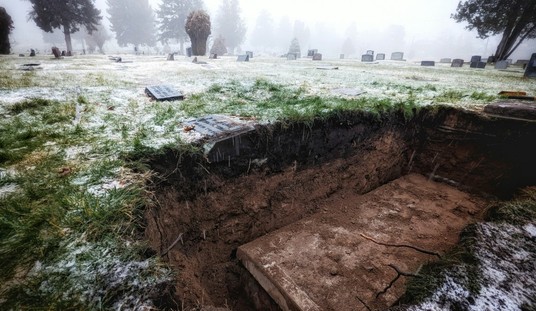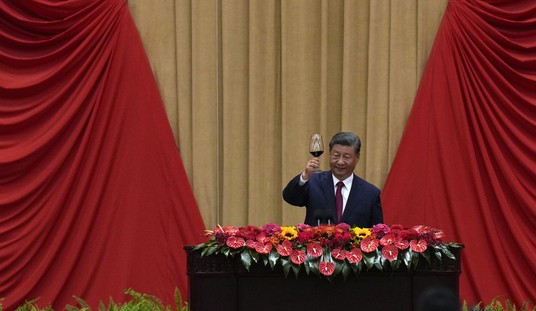
On Friday winged monkey embittered harpy former Secretary of State Madeleine Albright was making the rounds as a Hillary Clinton surrogate, extolling Hillary’s virtuosity in the realm of foreign policy. Albright, you might recall, was the Secretary of State that was so imposing that fellow diplomats at the Rambouillet negotiations on the future of Kosovo mistook her for the cleaning lady. Chris Cuomo, Chris-freakin-Cuomo, confronted Albright with a laundry list of Clinton disasters while Secretary of State. Including her documented failure to follow federal law in using a private email server.
“She has said she made a mistake, and nobody is going to die as a result of anything that happened on emails.”
Not killing people out of stupidity is hardly a resounding endorsement for someone seeking to be president. Unfortunately, we don’t really know this to be a fact. Hillary Clinton’s unsecured email server held a treasure trove of highly classified US documents and conversations and was basically a flea market for any foreign intelligence service with the ambition to gain access to it. Not only was it not encrypted, during its last stages it was stored in a facility that did not even have an intruder alert system.
For instance, we know of at least one occasion in which she compromised, by name, a CIA source in Afghanistan. Is that man still alive? We really don’t know.
Breitbart.com offers up dozens more instances in which Hillary violated federal law by divulging the identities of CIA operatives working inside embassies by carelessly storing classified emails on a server that had a “steal me” sign hanging on it.
Under the Freedom of Information Act there are multiple reasons why information cannot be released to the public. These are called exemptions. One of these is called “(b)(3)” (full disclosure, for five years I was an agency FOIA officer though (b)(3) was not an exemption I ever used):
(b)(3) Applies to the Director’s statutory obligations to protect from disclosure intelligence sources and methods, as well as the organization, functions, names, official titles, salaries, or numbers of personnel employed by the Agency, in accord with the National Security Act of 1947 and the CIA Act of 1949, respectively.
The history of this goes back in time to the 1970s when a rogue CIA agent named Philip Agee made it his life’s work to expose the identities of as many CIA agents, diplomatic cover or full-Valerie-Plame, as he could.
The Department of Justice gives this guidance on FOIA requests and the use of (b)(3):
The Supreme Court has held that section 102(d)(3) of the National Security Act
of 1947, (112) which requires the Director of the CIA to protect “intelligence sources and methods,” clearly refers to particular types of matters to be withheld and thus comes within the ambit of subpart (B), (113) and in some instances provides a basis for an agency refusing to even confirm or deny the existence of records. (114) (See the discussion of the use and origin of the “Glomar” response under Exemption 1, In Camera Submissions, above.)Likewise, section 6 of the Central Intelligence Agency Act of 1949 (115) — protecting from disclosure “the organization, functions, names, official titles, salaries or numbers of personnel” employed by the CIA — meets the requirements of subpart (B). (116) Similarly, section 6 of Public Law No. 86-36, (117) pertaining to the organization,
functions, activities, and personnel of the National Security Agency, has been held to qualify as a subpart (B) statute, (118) as has 18 U.S.C. § 798(a), (119) which criminalizes the disclosure of any classified information “concerning the nature, preparation, or use of any code, cipher or cryptographic system of the United States.” (120) A provision of the Atomic Energy Act, prohibiting the disclosure of “restricted data” to the public, (121)
refers to particular types of matters — specifically, information pertaining to atomic weapons and special nuclear material (122) — and thus has been held to qualify as a subpart (B) statute as well. (123)
This is pretty straightforward. The names and positions of CIA agents are classified under law and exempt from disclosure under FOIA because disclosing them is a criminal offense.
This email was sent from Vichy Republican and (hahahaha) Ambassador to Malta Doug Kmiec to Cheryl Mills who forwarded it to Hillary’s private email address. It reveals the name of a CIA employee whose name has been redacted using the (b)(3) exemption.
This one lets you know a CIA official got a photo session with Hillary Clinton at 8:40am on December 15, 2011.
That just gives you a flavor of what was found.
The point is that there was absolutely nothing wrong with these emails circulating on a secure email system. You might question the wisdom of it because few email systems targeted as frequently as State’s are truly secure. Once they were forwarded to Hillary Clinton’s private email, federal statutes were violated. Whether those violations were criminal or not will be decided in the next few weeks. What we do know now is that anyone with a set of Hillary’s original emails, like the Russians or ChiComs or Iranians or the Costa Ricans or Jamaicans or Lichtensteiners can now crosswalk those emails to the redacted versions and identify CIA agents.
Once these people there are vulnerable not only to surveillance and attack but the people they meet with are subject to surveillance and attack. Even if the people are operating in broad daylight and in no danger at all, the black letter of the law makes this action illegal.
Hillary Clinton is a dangerously incompetent and endlessly malicious person who simply cannot be trusted with anything pertaining to national security.
















Join the conversation as a VIP Member